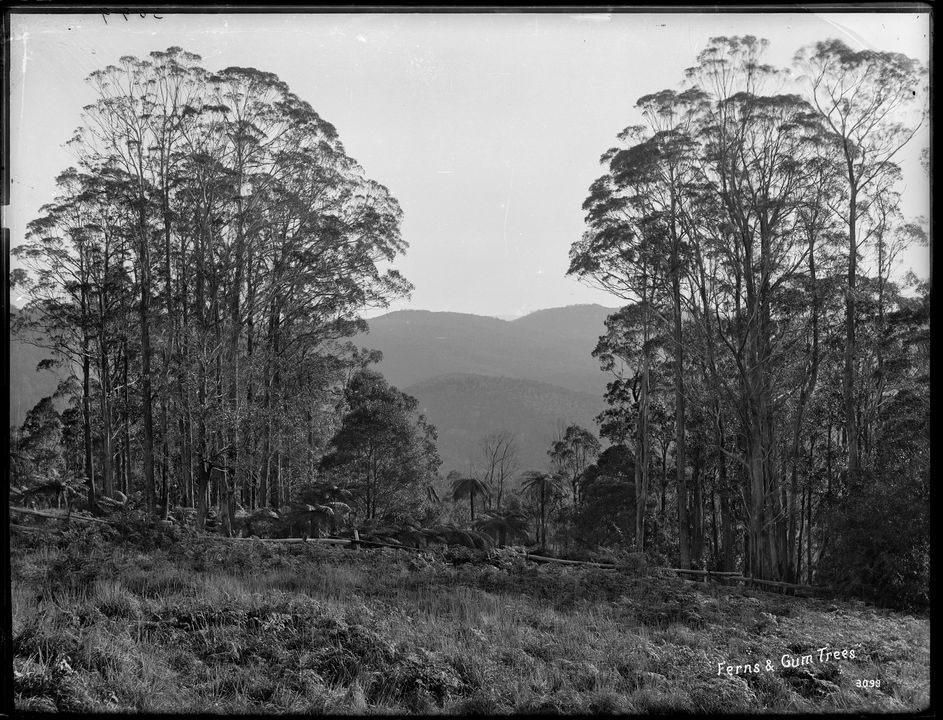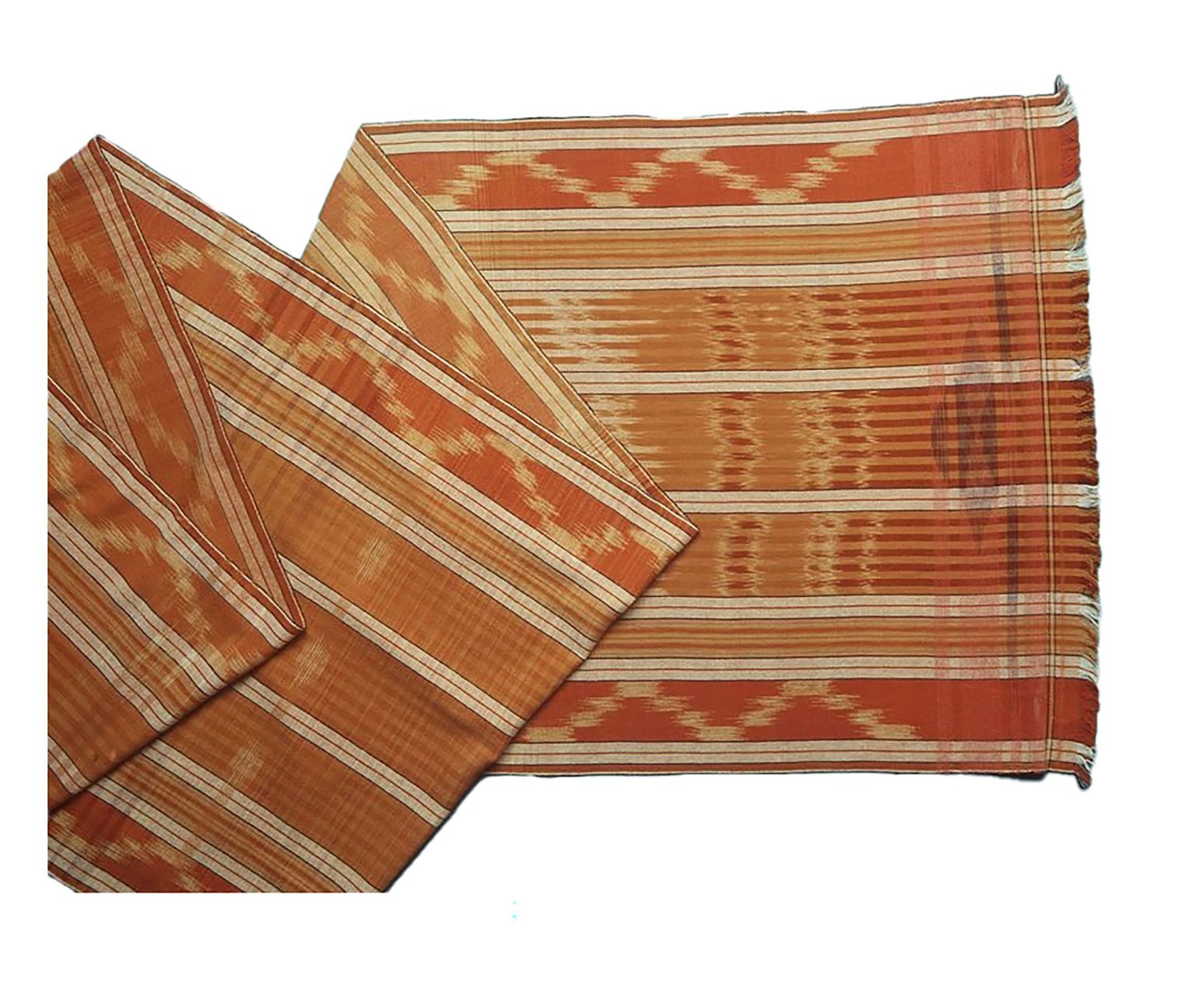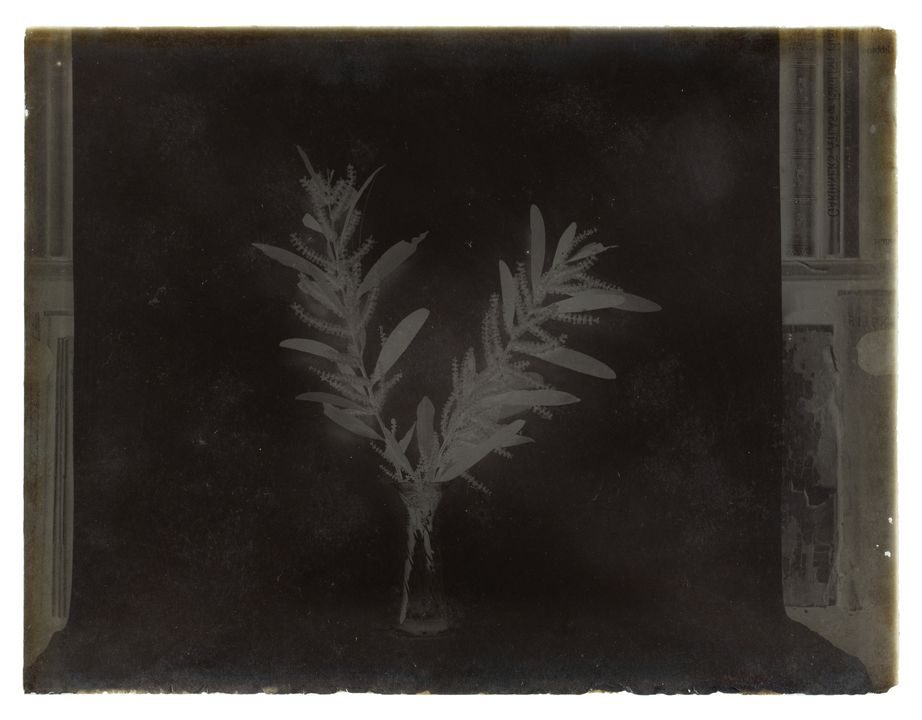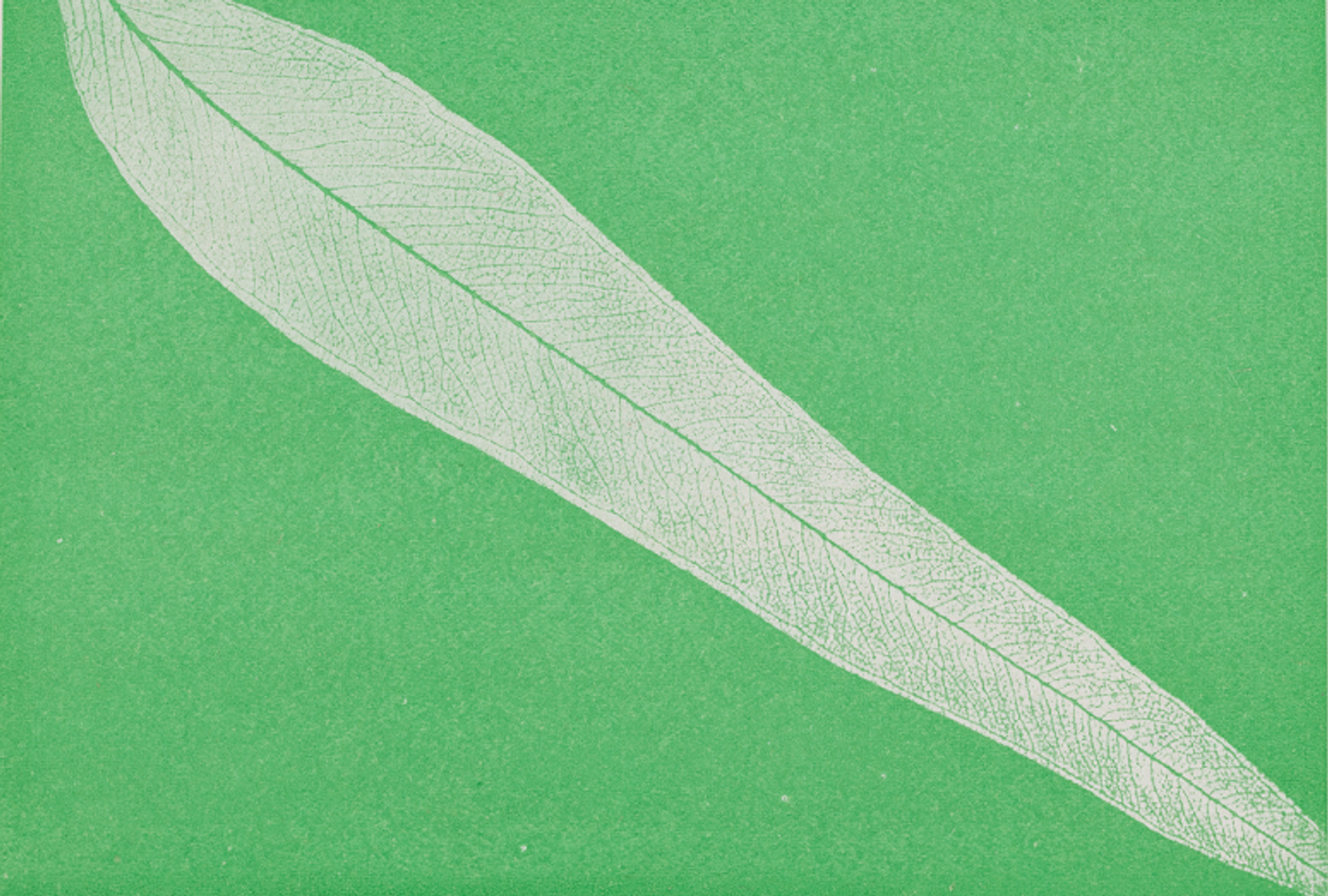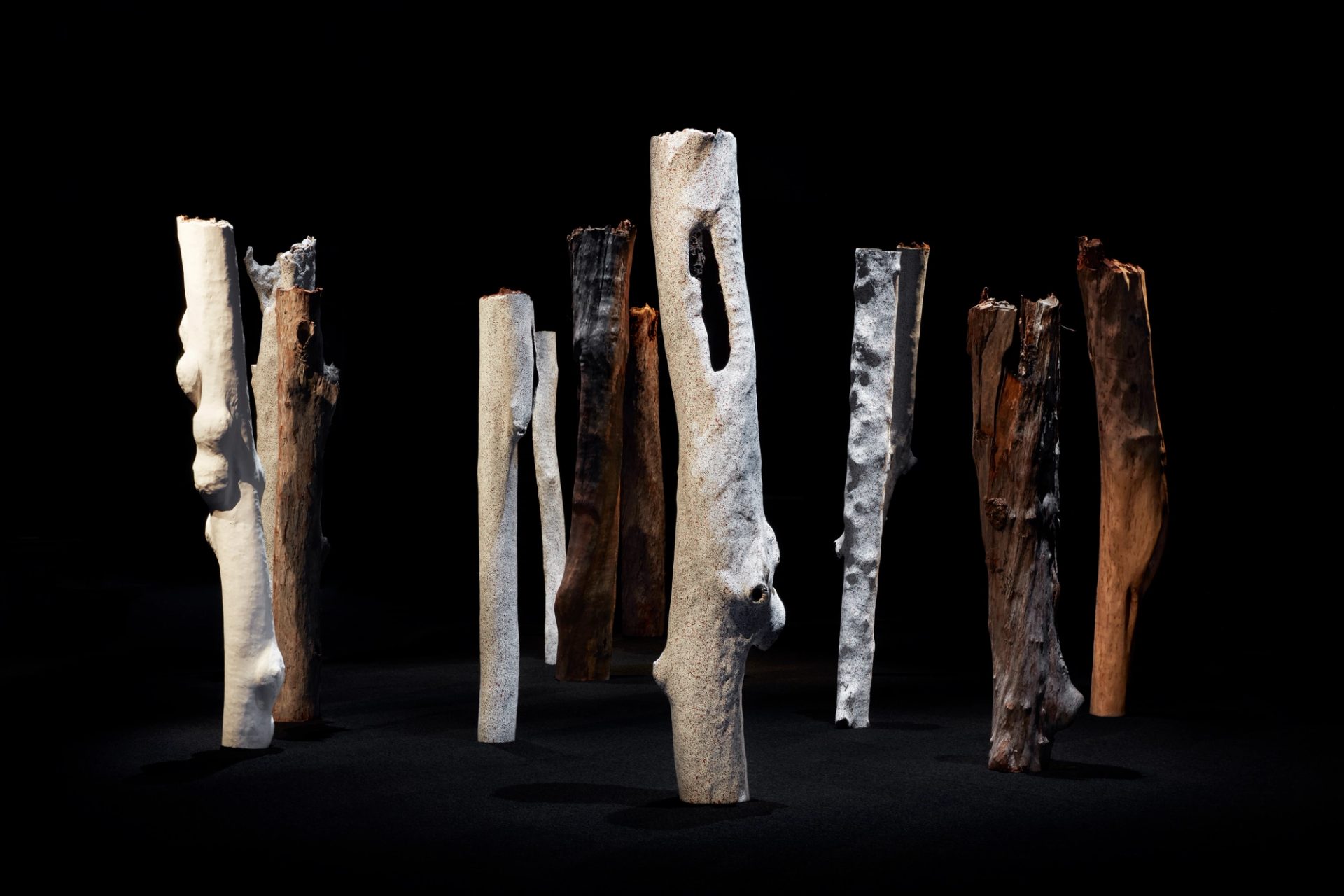In Relation – Vitality

‘Vitality’ is the third episode of In Relation, a five part podcast series by Powerhouse inspired by eucalypts and the Powerhouse exhibition, Eucalyptusdom.
‘It's as though I'm walking that Country with our ancestors and so for me, it's peaceful, but it's also an opportunity for me to really seek out what these stories are. What are these trees telling me?’
Transcript
Emily McDaniel The Powerhouse honours the Traditional Custodians of the land on which our museums are situated. We respect Elders past and present and recognise their continuous connection to Country.
We respectfully advise First Nations audiences that Eucalyptusdom and this podcast, In Relation, reckon with the museum's colonial collection practices and include objects and materials of, and from Country. I'm Emily McDaniel, Director of First Nations here at the Powerhouse in Sydney, Australia. I'm a Wurundjeri woman from the Kalari clan in Central New South Wales. And I'm a co-curator of the exhibition Eucalyptusdom alongside Agatha Gothe-Snape, Sarah Rees, and Nina Earl.
This exhibition reckons with our cultural history, an ever-changing relationship with the gum tree. It contains over 400 objects from the Powerhouse collection alongside 17 newly commissioned works. In Relation is a podcast series that brings into relation practitioners, curators, and researchers around a selection of key themes connected with eucalypts. It is a series of dialogues learning with, and from trees.
In this episode of In Relation, ‘Vitality’, we will hear from Nici Cumpston, Zena Cumpston and David Doyle from the Barkandji Nation. We're talking about vitality; the vitality of plants, trees, and knowledge. Wiradjuri artist, Jazz Money, said ‘No colonial intervention can alter the truth of Country.’ And when we speak of vitality, we speak of the potency of Country. And that's exactly what we are talking about here.
Nici Cumpston I'm a Barkandji artist, curator, writer and educator living here on Kaurna Country. And I'd like to acknowledge their Elders and the work that they do, bringing the young people up to be the Elders of our future.
Zena Cumpston Hi, my name's Zena Cumpston. I live on Wurundjeri Woi Wurrung Country and it's beautiful Country here. And I've been very lucky to work with lots of Wurundjeri community members recently on an exhibition called Emu Sky. I'm a Barkandji woman like my sister, Nici, and our mob’s from Western New South Wales. Nici and I are co-curating the show, but it really is a group endeavour. It's not in that kind of westernised, I guess, lens where we go, ‘Oh, we'll decide what's in the show’. It's actually each person in the group brings what they want to tell the story that they wanna tell from their heart through their art practice. But it's been tricky trying to work out what the show's about because being on Country kind of is the only thing that tells us what that is.
NC We've had one trip recently to Kinchega National Park, where we stayed in the shearer's quarters. And David took us through all sorts of, you know, really beautiful information in regard to our ancestors and some of the incredible cultural material that's been found in and around that region, as well as sharing knowledge of plants and Country.
ZC We realised right at the start that we really wanted Country to be an active participant in that, you know, knowledge gathering and sharing. So, we've got some amazing leads from our last trip and that vitality of Country and Country as a repository of all knowledge was so prevalent for us on that trip together, we learned so much together and really could feel ourselves being taken down pathways individually and collectively also. And that was, I guess, Country's active participation in our process.
David Doyle My name's David Doyle. I live here on Barkandji Country in the Wilyakali language group of our Nation. So, I'm fortunate enough to still live and work in my homelands. I spend a lot of time back home, out in the Country. I teach cultural practice, a dabbler, a bit of art, I carve a lot of wood. Then my day job is I work for the Royal Flying Doctors.
ZC So, us three know each other because obviously Nici's my sister and I have grown up with her, but David Doyle is our countryman, he's Barkandji mob as well. But David actually grew up in Meninde.
‘Plants really have been, in my perception, the backbone of our ability to survive, thrive, adapt and live here for the longest time imaginable.’
DD I just wanna take a minute to explain what the word Barkandji means. It's the thing that connects myself, Nici and Zena together is we all come from Barkandji Countries and the word barka, meaning river, it's our Barkandji word for river and kinji, meaning river people. So, we come from the river, that's our connection to each other. It's our connection to the land and our connection to the Country, where I'm fortunate to continue living.
EM Nici Cumpston's work along the Murray Darling conveys the potency of Country and her photographic practice has been a way to learn from and strengthen connections with Country.
NC The work that I do as a photographer is really about me being able to walk on Country and to feel, and to get a sense of what it is that I'm looking at. It's about connecting with the sounds, with the smells and with the feel of the place. The essence of Country comes through and there are signs that tell me where to go, what to look for. It's as though I'm walking that Country with our ancestors. And so, for me, it's peaceful, but it's also an opportunity for me to really seek out, you know, what these stories are, what are these trees telling me? What are these waterways? What's the ecological situation at this moment in time? And that can all be recorded through the photographic medium. But it's more than that. It's a deeper relationship that comes through in the images, I think, through spending that time. It's not something that you can take quick snapshots of. It has to be a relationship that you form with the place and with the scene that you are in amongst. And so, for me, the trees are telling the story.
At one point, Zena and I were doing some work up north of Broken Hill and everywhere we walked, there were shards of stone tool making practice. And I remember Zena said, ‘It's like the ancestors have just left and they've left their calling cards for us to know that their presence is still very much, you know, alive and here with us, their energy is still here and it's here in the trees.’ That's really what my practice is about. Being able to share the stories and for me to be able to think about what those stories are, but also then to do my own investigation further by talking to Elders and other people in the community so that I could find out, you know, other vital information about this particular tree or this particular place, to be able to have the opportunity to do something productive, like being one on one with a camera out on Country and being able to create images. It's a treasured thing that I have.
EM In Zena Cumpston’s ongoing research within both Indigenous and Western knowledge systems the relationship between plants, knowledge and culture is the core of vitality.
ZC One of the reasons I've been so interested in plants over a long period of time is because the more I started to learn about my mobs and mobs from all over Australia's sort of cultural practice in relation to plants, the more I started to realise that plants really have been, from my perception, the backbone of our ability to survive, thrive, adapt, and live here for the longest time imaginable. Because we've used plants, not just for food, not just for medicine, but for technologies and all of the things that we really need to stay strong and healthy. And the vitality of Country has allowed us to adapt through some of the most incredible situations.
We know that the time that we've been here is badly conceptualised in that it relies on notions of the Western scientific lens. Whereas our mobs say we've been here forever. And when I was at school, I remember reading 20,000 years. And then I remember reading 25 and then I remember reading 35 and then it went to 40 and you know, then 65. And then there's a lot of things being investigated recently that point more towards 120, 140, but they haven't been substantiated through the Western lens just yet. But I think we have been here forever. That's what our old people tell us. And we have stories for everything. And every mob says we've been here forever through their oral traditions. So, I'm just really looking forward for that information to be accepted by all Australians.
DD I work with the archeologists out this way and we don't do any extensive archeological digs, but the surface stuff shows that our people have been in the region for 45,000 years continuous. So, we've never had to move. We've had food and resources stacked on that. We've never had to live a nomadic lifestyle and I'm sure if we ever let archeologists, and I don't think it'll ever happen because we're so reluctant to let people in to dig down, they would find that, yeah, we have been here forever. There's a never-ending supply of proof just underneath the soil. And it just shows that, you know, we did adapt to the life that was around us, the plants we continuously adapted, we farmed, we kept livestock. It's all, it's all there. It's all, it's all proof.
ZC Going back to plants. I just really, really believe that they have been the backbone of our longevity and plants just are the most incredible resource because there's so many things that they can do. Even if you just think about the river red gum.
EM For the Barkandji, and particularly for David Doyle, the river red gum is deeply significant. It is also highly useful, and its material language extends to many areas of life and culture.
DD So, some of the uses of course, were large scale canoes, which you can find photographs of on the Darling River in lots of different places. We still have some in museums that are well and truly over 100, 140 years old, that look like they could go on the water today and still float, no problem whatsoever. Right down to smaller coolamon shape bowls. And I'm only talking about bark here. There's smaller vessels that we could take off the tree quite easily to carry a baby, carry food, used for winnowing seed, for mixing bowls, mixing ochre, carrying fish, cooking in. Like I said, that's just the outside of the tree. As well as some of that bark, having medicinal properties for colds, flus, coughs, sore throats. The roots were used for boomerangs or clubs. You can walk along the river where the roots are exposed and see where our old people had taken them off with stone axes, with metal axes and were still taking them off now with chainsaw.
So, you know, that adaptability, we also use the leaves, of course, for medicine, eucalyptus leaves. Then the amount of animals that live in it, you know, possums, we've got insects, the grubs, the birds that live in it, the termites that live in it. So all of these things housed in one tree shows how important they were. Plus, then they provide us with shade. They provide us with heat. They provide us with shelter. They provided us with a safe place to have babies. They provided us with places that we could cook inside as well as fuel the fires. I teach quite a bit of that in cultural practice.
When I go back to my hometown of Meninde and incorporate that into teaching the school kids, one of them being, making bowls out of either the bark or the wood and red gum's one of my favourites. You know, it's one of those hardwoods. That's still soft enough to allow kids to work at easily, but hard enough that it's gonna last you for a lifetime. The joy you actually get out of just sitting down with that piece of wood, it's telling you a story. I carve sculpture with it as well. I've tried to carve a kangaroo from a piece of wood that I found on the edge of the river. And it turned into a fish. The trees got their own stories that they've got their own wheels. And I only use wood that's naturally filled from a storm or from a fire. One of the things that I really like to do now is use some of the huge red gum that we have. And I say huge because they're massive. They're, you know, eight, nine feet across. So that's, you know, over three meters and they've been through bush fires. So, you find dead bits that are burnt and incorporating that into a piece of sculpture and into a bowl. So, it still has its story. It still can tell its own story, but you're just helping it by highlighting some of those bits and pieces.
NC There's one particular tree that I've photographed that I've named great grandmother Barka. And that's a tree that I found on the Barka near Wilcannia. And it was back two years ago when we were right in the middle of that terrible drought. But this particular tree that I found was a huge, beautiful river red gum. And as the closer I looked at it, you know, I could see there was a scar at the base of it. That was probably the size of a coolamon. That's what I felt, a coolamon had probably been cut from that part of the tree. And there were lots of dead limbs all around it, but it was still, you know, huge and majestic. It would've been about, I'd say at least three meters around and taller than tall [laughs]. And so, I just kept walking around it and looking at it and watching how the light fell on it.
And then I noticed, as I looked further up the tree, that there was one ring, there was another ring where Aboriginal people had brought those limbs together when the tree was a sapling. As the tree grows, those rings rise up in the tree and they they're indicators of safe place, a place of abundance. And so, I just spent, you know, the rest of that afternoon as the sun went down, photographing many different aspects of that tree. But that's the thing. The trees are full of knowledge and they guide us and they show us the way. And I think that's another really important aspect of these majestic river reds.
EM In urban environments. It can be harder to find these connections. For Zena, trees and plant life restore vitality, and remind us whose Country we're on.
ZC I think about plants and the way that they can reinstate vitality. Mostly in the research work I've done recently for the Clean Air Urban Landscapes Hub. And because I'm obsessed with plants, I decided to look at Aboriginal perspectives of plants in urban areas. The more that I started to do research about Country in urban areas and especially in Naarm, Melbourne, where I live, the more I started to realise that so many of the plants that have been really important to mobs all over Victoria and the Southeast of Australia, where I predominantly was kind of focusing my research, are still there and are plants that have similar conditions. And that's why there's so many plants that are the same. I see how many connections we have culturally with different mobs across the Southeast. You can see that, especially in our artworks, there's so much beautiful line work that’s quite similar right across the Southeast.
‘I wanted to help people to understand that no matter where you are in Australia, whether urban or remote, you are on Aboriginal or Torres Strait Islander land.’
And there’s no city and no urban place in Australia that does not sit on and within Country that is spoken for by Traditional Owner groups or a group. It was really interesting work because I think starting to unpack the uses and the deep knowledges and the cultural connection of plants that people could still see in their every day, in urban areas, was one way of reversing the way that we are completely erased as Aboriginal people in urban areas. We look around and we don't get to see much that attests to our belonging and that this is Country. And so, I've really found through starting to tell the stories of plants and plants that people could recognise in there every day.
Like for example, lomandra, which is everywhere you look in Melbourne and lots of other cities, it's everywhere. It gave people almost a portal through which to really connect with how incredible and vital our knowledges of Country are and how much people are missing out on through the circumstance we find ourselves in today, where yes, we're starting to learn a little bit nowadays, but we're still in a colonised situation. Our knowledges, our ways of knowing, being, doing, seeing are still silenced. And that's how you know that colonisation is not a point in time. It is an ongoing structure. And when I take students through the exhibition that I just curated called Emu Sky, which centres a lot around plants and most especially Indigenous knowledge of Country, we go to a beautiful installation that Dr Jonathan Jones put together with lots of Aboriginal artists from across the southeast. And it shows the vitality of Country through an amazing display of all sorts of items, all made from plants and from Country that work speaks to the vitality and the overflowing cornucopia that Country offers us – if we know how to look after it.
EM This cornucopia includes ingredients you can find in your supermarket, if you are lucky: Kangaroo macadamias, warrigal greens. For David, one very important ingredient is quandongs.
DD We all think of quandong of the fruit. Everyone thinks of quandong pie, but I think there's about - it must be up to about 15 or 16 different dishes that I've made now with it, as well as the roots and the leaves of it were used for rheumatism. The kernel from an inside of the seed was used as a hair conditioner and was also used as a contraceptive in some way. And I'm not sure about that one, but as well as a laxative. So, and I suppose if you mix those two together, you don't really wanna make a baby.
‘But the uses of each plant, they’re not just as a food, there's a medicinal side of it.’
There's the fibre side of it, where we can use it as a tool, the timber itself, again, as a tool, a digging stick, and they've all got their own individual uses, their own ways of being part of our culture. And the way we can use them is what I try and teach the kids now, because I say to them, you know, ‘It doesn't matter if we take off a branch here because plants like to be permed.’ We take what we need when we need it.
EM There is knowledge inherent in plants, but that knowledge needs to be earned. And that process looks different for everyone.
ZC I've mainly engaged with knowledge about plants that comes from books. And so that's been an interesting journey for me as an Aboriginal woman who hasn't grown up on Country to learn in that way. And I've also realised a long time ago that not growing up on Country has created a huge deficit in what I know and what I can know, but I also don't accept that I'm any lesser Aboriginal person because I haven't grown up on Country.
But the way that I've engaged through books is, most of the books are written by non-Aboriginal people. Lots of them are historical sort of understandings of our plants, and even more newly published information about our plants I find slightly problematic at times. They can say things like, ‘This such and such explorer discovered this plant’, and I think no [laugh], they didn't. And now I actually, I buy a lot of plant books and I'll actually write in them when there's something that I feel is extremely wrong. And I've put my name in the front of the book. Cause I think, I hope someone gets this book one day and see that that's not right, and that I send them on another path to understand what is.
I've processed a lot of these sources of information with my own lens as an Aboriginal woman. And I've tried to share them with people. So, I've put lots and lots of pieces of information together from many, many sources. And then I've tried to get out as far and as wide as I can. And I did that with my Indigenous plant use booklet, which was a free booklet that I made mainly for schools and childcare and for families for young people, especially to be able to really easily engage with plain language about plants predominantly from the Southeast. But I tried to choose ones that grow, you know, in a huge circumstance across Australia, like kangaroo grass.
David helps me a lot. And I always say, I will never know what David knows because I'll never spend time on Country, the way that he has and will. I hope to spend more and more time on my Country as time goes on and in the projects that I'm choosing, I'm making sure that Country gets factored in, but I'm just so grateful because every time I get stuck, I send an email to David and he points me in the right direction. So, every time I find a good book, I send it to him and we just try and keep that reciprocity going. And same with Nic. She knows so much more than I do. And so, yeah, I'm lucky that I've got other Barkandji mob that I can yarn to, and they can tell me their bit. And it always helps me to fill in the gaps.
DD And I guess I use a similar type of process as well. Like, I may not have the book about it, I've just got a walking encyclopedia throughout the community. So, I go and ask the questions to the Elders. I find out the same way you do.
NC I think that through the relationships that we have with each other and by continuing to meet and share knowledge together on Country as a collective group of Barkandji people it's really honouring our Country and it's giving us a way to be able to learn from each other, to give to each other, to be able to listen and to share. And it's not only empowering us, it's empowering our Country. It's important to remember that, that we have this opportunity. And I feel that for me, through the visual arts, that that's given me a way to be able to be strong and to have a voice, to talk about issues and concerns that I have either with Country or with people or whatever, you know...might be that I'm photographing and sharing. But it's a way, a really important, potent way, to be able to be active visually and vocally.

In Relation: Vitality
Host: Emily McDaniel
Featuring: Nici Cumpston, Zena Cumpston and David Doyle
Commissioning editor: Lisa Havilah
Editor: Mara Schwerdtfeger
Sound design and theme music: Jane Sheldon
The In Relation team includes Ayeesha Ash, Callum Cooper, Rebecca Gallo, Anna Gardner, Emily McDaniel, Sarah Rees, Hannah Saunders, Cara Stewart and Agatha Gothe-Snape.

















